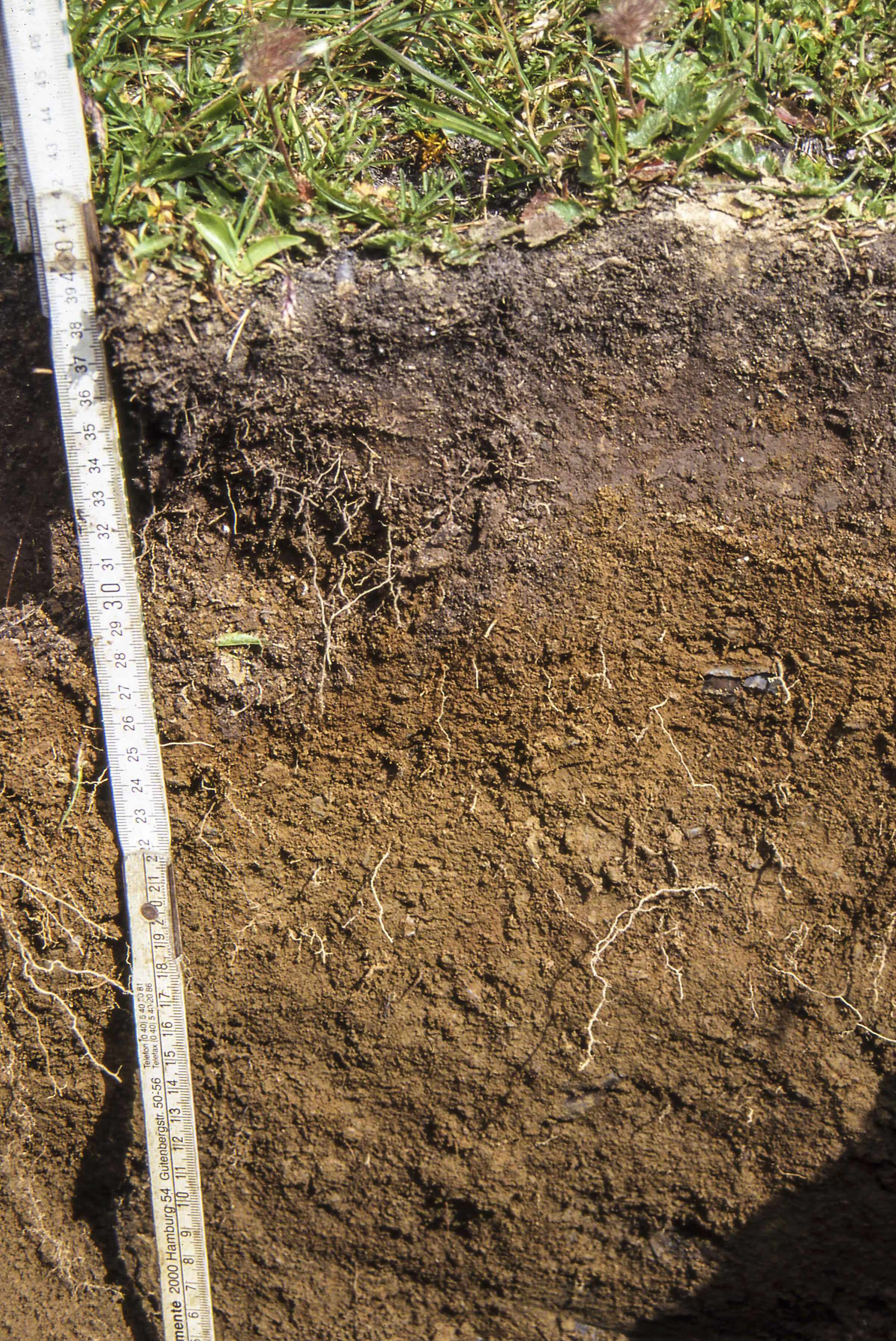The root mass is particularly high in grassland soil. More than three quarters of the plant roots are in the top 10 cm of soil. Dead roots, root parts and mycorrhizal hyphae as well as root exudates from living plant roots are important humus formers. Therefore, grassland soils are usually very rich in humus. The humus content in the topsoil is often more than six percent. In particular, grassland soils influenced by groundwater (gley, bog, moor) are extremely rich in humus. In fertile grassland soils, the carbon:nitrogen ratio is lower than 12:1. The optimal pH value in the main root zone of grassland soils should be between 5.0 and 6.2. In this pH range, mineral nutrients for grassland plants are optimal and available in a balanced ratio. A crumbly structure in the topsoil is favorable because the absorption, storage and percolation of water as well as aeration and root penetration are optimal. The mineralogical composition of the soil-forming parent rock has a major influence on the soil-borne nutrient supply capacity of a grassland soil. This is why soils made from rock rich in quartz (e.g. sandstone, quartzite) are naturally poor in nutrients. Soils made from rock rich in mica and/or feldspar (e.g. granite, gneiss, mica schist), on the other hand, have a high natural potassium supply capacity. Soils made from carbonate rock (e.g. lime, dolomite, marl) contain a lot of calcium and magnesium.






